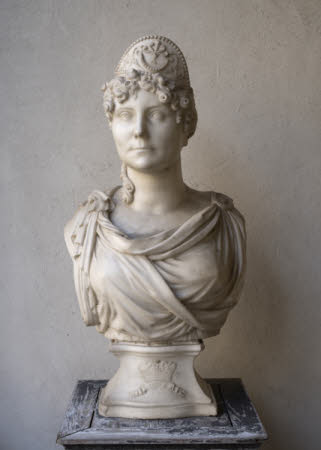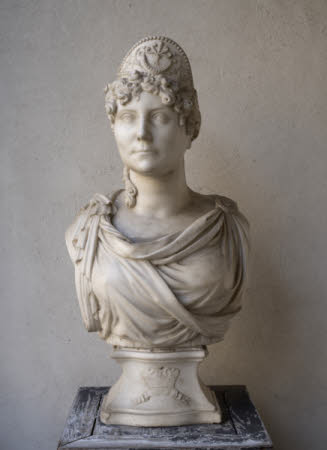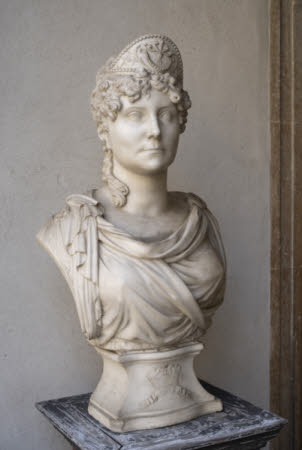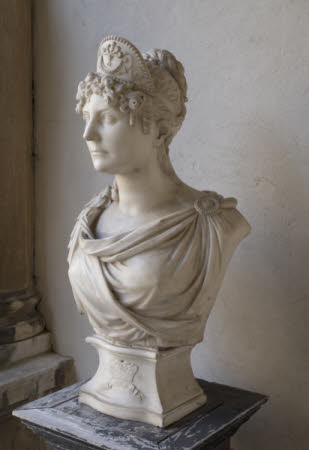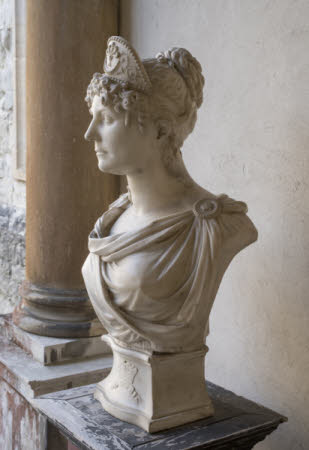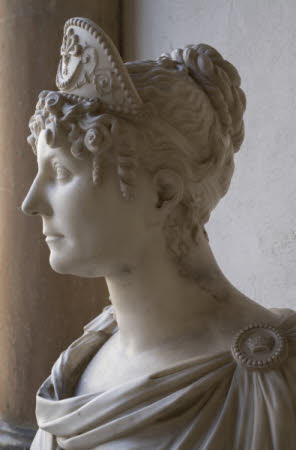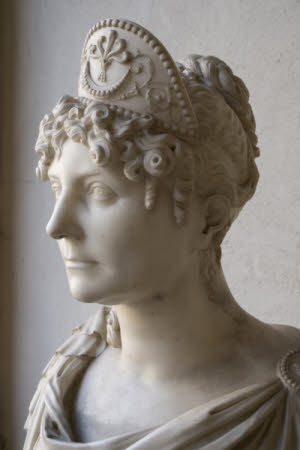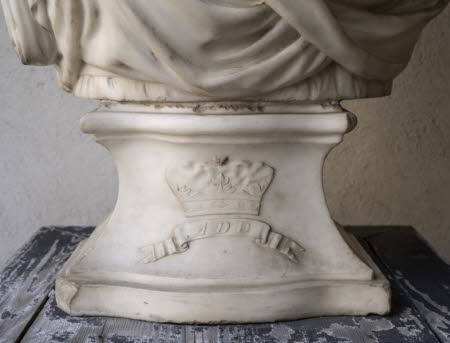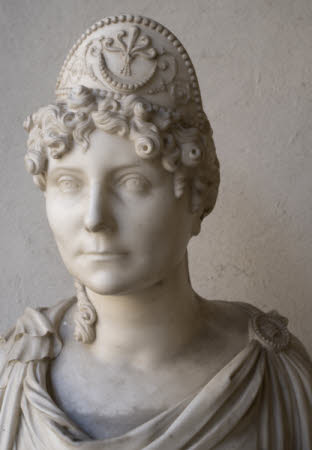Arabella Diana Cope, Duchess of Dorset
Thomas Kirk RHA (Cork 1781 - Dublin 1845)
Category
Art / Sculpture
Date
1818 (signed and dated)
Materials
Marble
Measurements
770 x 390 x 270 mm
Place of origin
Dublin
Order this imageCollection
Knole, Kent
NT 130067
Summary
White marble bust, Arabella Diana Cope, Duchess of Dorset (1769-1825) by Thomas Kirk RHA (1781 - 1845), signed and dated 1818. A portrait bust with the shoulders swathed in a toga, hair dressed in the classical manner and decorated with a tiara. Concave rectangular socle carved with the coronet and the initials 'ADD' (Arabella, Duchess of Dorset) in a ribbon swag below. Inscribed on the reverse of the bust 'Dublin 1818 T. Kirk sculpt '.
Full description
Thomas Kirk was an Irish sculptor, born in Cork in 1781. He studied at the Royal Dublin Society Schools, and upon completing his studies he quickly gained recognition as a competent artist, securing a number of commissions. Although he was probably best known for his funerary monuments, he also produced a large number of portrait busts, most of which remain in Ireland, however there are also a number of works in England. His bust of Arabella, Duchess of Dorset (1767-1825) was carved in 1818, and was exhibited at the Society of Artists, Hawkins Street, Dublin in 1819. Arabella was the wife of John Frederick Sackville, 3rd Duke of Dorset. The third Duke was a notorious womanizer who had had a number of mistresses prior to marrying, including the ballerina Giovanna Zannerini (also known as Baccelli, see NT 130059). The Duke and Arabella married in 1790 and had one son together, George John Frederick, who died in a riding accident aged just 21, and two daughters, Mary and Elizabeth. The Duke died in 1799, leaving Knole and the estates to his wife until her death. She married for a second time in 1801 to Charles Whitworth (1752-1825), who later became 1st Earl of Whitworth. Whitworth was appointed Lord Lieutenant of Ireland in 1813, a post which he held until October 1817. The choice of an Irish sculptor for the bust of his wife was almost certainly due to his connections in Dublin. A bust of Whitworth was produced around the same date by another Irish sculptor, John Smyth (c.1173-1840), to commemorate Whitworth laying the first stone of the new General Post Office building in Dublin in 1814. The bust of Whitworth was also exhibited in 1819 at the Society of Artists, Hawkins Street, Dublin. Anna Moore (August 2018)
Provenance
Commissioned from the artist in 1818; exhibited at the Society of Artists, Hawkins Street, Dublin in 1819. Listed in the 1864 inventory of Knole as being in the Ballroom, along with a marble bust of the Earl of Whitworth. Transferred to the Government in lieu of inheritance tax and allocated to the National Trust for display at Knole, 1966.
Credit line
National Trust Collections (Knole, The Sackville Collection)
Marks and inscriptions
Reverse of bust: Dublin 1818 T Kirk sculpt
Makers and roles
Thomas Kirk RHA (Cork 1781 - Dublin 1845), sculptor
References
Gunnis, Rupert, Dictionary of British sculptors, 1660-1851 /, 1953, p.230 Strickland 1913: W. G. Strickland, Dictionary of Irish Artists, 2 vols.1913, p. 589
